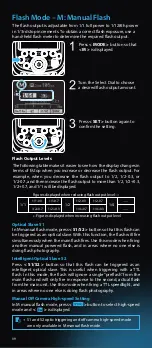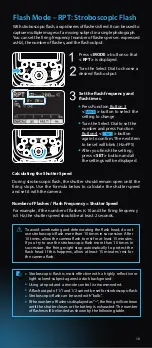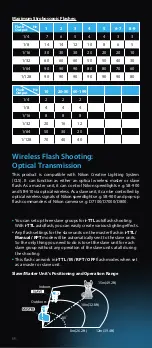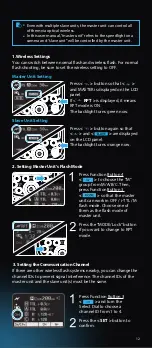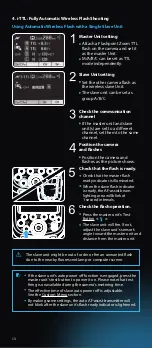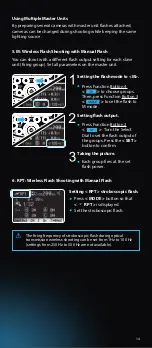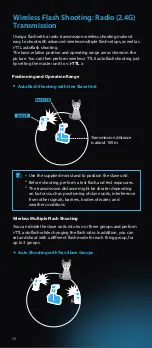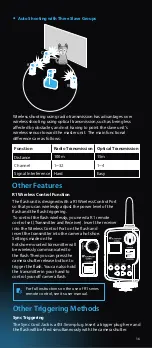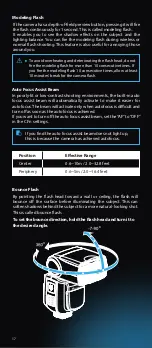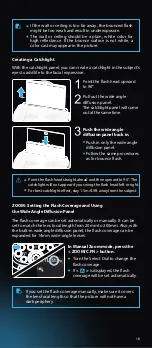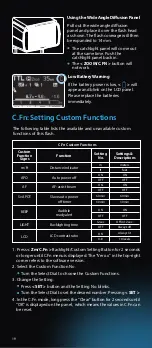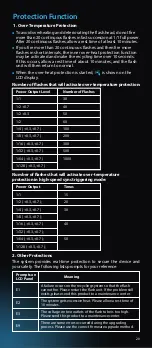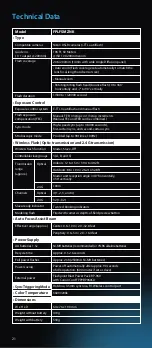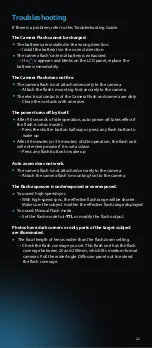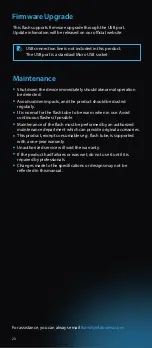
22
Troubleshooting
If there is a problem, refer to this Troubleshooting Guide.
The batteries are installed in the wrong direction.
→
Install the battery is in the correct direction.
The camera flash’s internal battery is exhausted.
→
If
< >
appears and blinks on the LCD panel, replace the
batteries immediately.
The Camera Flash cannot be charged.
Auto zoom does not work.
The camera flash is not attached securely to the camera.
→
Attach the camera flash’s mounting foot to the camera.
The power turns off by itself.
After 90 seconds of idle operation, auto power off takes effect if
the flash is set as master.
→
Press the shutter button halfway or press any flash button to
wake up.
After 60 minutes (or 30 minutes) of idle operation, the flash unit
will enter sleep mode if it is set as slave.
→
Press any flash button to wake up.
The Camera Flash does not fire.
The camera flash is not attached securely to the camera.
→
Attach the flash’s mounting foot securely to the camera.
The electrical contacts of the Camera Flash and camera are dirty.
→
Clean the contacts with an eraser.
The flash exposure is underexposed or overexposed.
You used high-speed sync.
→
With high-speed sync, the effective flash range will be shorter.
Make sure the subject is within the effective flash range displayed.
You used Manual Flash mode.
→
Set the flash mode to
i-TTL
or modify the flash output.
The focal length of lens is wider than the flash zoom setting.
→
Check the flash coverage you set. This flash unit has the flash
coverage between 20 and 200mm, which fits medium-format
cameras. Pull the wide Angle Diffusion panel out to extend
the flash coverage.
Photos have dark corners or only parts of the target subject
are illuminated.


